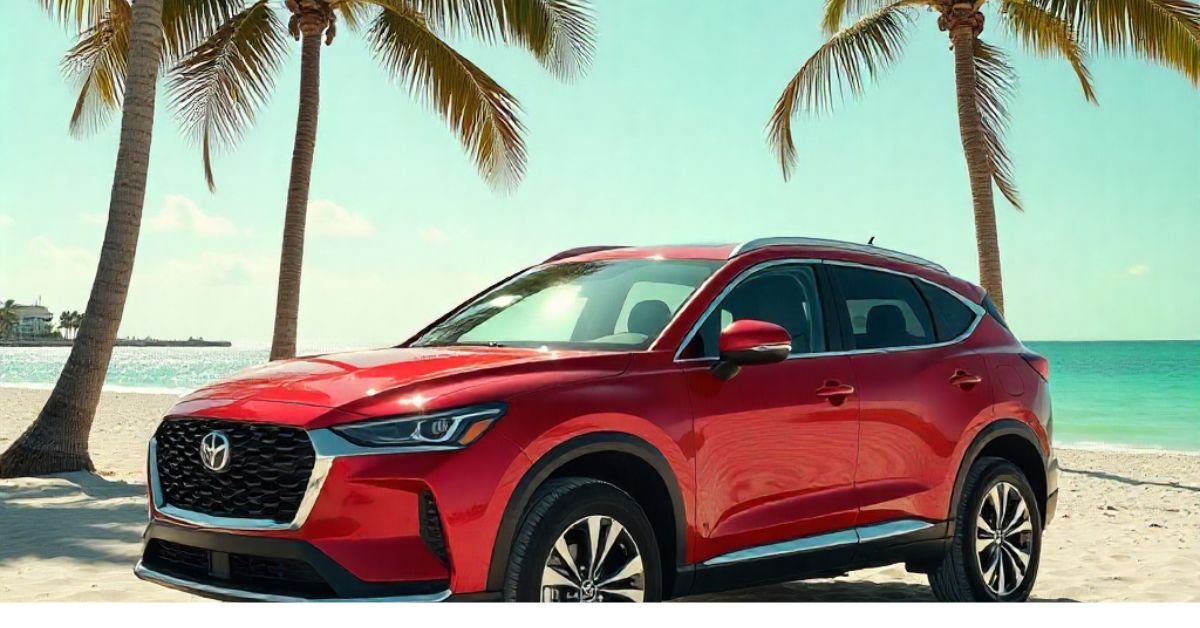BLOG
Navigating Chicago: Your Smart Guide with Google Maps

Navigating Chicago: Your Smart Guide with Google Maps
Visiting or living in a city as vast and fast-paced as Chicago can be overwhelming without the right tools. Luckily, Google Maps has evolved far beyond just a GPS app—it’s now your personal tour guide, transit advisor, and dining companion all in one. Whether you’re a tourist discovering the Windy City for the first time or a local looking to get around more efficiently, this smart guide will show you how to use Google Maps to explore Chicago like a pro.

Getting Around Chicago’s Transit System
Chicago’s public transit system is one of the most comprehensive in the U.S., with the CTA (Chicago Transit Authority) operating the famous “L” trains and buses. Google Maps offers real-time integration with the CTA, giving users instant updates on train schedules, bus routes, and even service delays. You’ll get suggestions on which line to take—like the Red Line or Blue Line—based on the fastest route at that moment.
It even considers accessibility options, showing you whether a station has elevators or ramps—vital for travelers with disabilities, parents with strollers, or tourists carrying luggage.
Exploring Iconic Chicago Neighborhoods
One of the best ways to enjoy Chicago is by neighborhood, each offering its own culture, food, and atmosphere. Google Maps uses and local search trends to curate popular spots and hidden gems alike.
For instance, when you explore Wicker Park, Google Maps might highlight street murals, indie coffee shops, and popular brunch spots based on local reviews and ratings. In the Loop, it’ll guide you to places like the Art Institute of Chicago, Millennium Park, and the Cloud Gate (The Bean)—with estimated wait times and peak hours included.
Walking the City: Best Routes and Trails
Chicago is a walkable city, especially in spring and summer. Google Maps makes urban walking even better by mapping pedestrian-friendly routes like the Lakefront Trail, which stretches for miles along Lake Michigan and offers stunning skyline views.
Want to avoid crowded sidewalks? Google Maps analyzes foot traffic data to suggest quieter times or alternate streets. It also shows where you’ll find public restrooms, water fountains, and shaded areas—perfect for long strolls or jogs.
Hidden pathways like The 606—a converted elevated rail line turned into a walking and biking trail—are also highlighted with markers for art installations, parks, and community gardens.
Dining, Coffee Shops, and Local Favorites
Hungry in River North? Craving deep-dish pizza in Lincoln Park? Google Maps helps you find top-rated local restaurants and cafes by analyzing user reviews, sentiment, and even menu highlights using advanced.
For example, searching “best Italian food” near Old Town might show you restaurants with reviews mentioning “authentic pasta” or “family-style ambiance.” Filters like “vegetarian,” “outdoor seating,” or “kid-friendly” help you narrow options that suit your vibe.
Real-Time Traffic and Driving Tips
Driving in Chicago, especially during rush hour, can be tricky. Google Maps gives live traffic updates and suggests alternate routes if there are accidents, road closures, or construction work on highways like the Kennedy Expressway or Dan Ryan.
Looking for parking? The app points out nearby garages, street parking zones, and even EV charging stations, with availability and estimated pricing. For ride-share users, Google Maps shows the best pick-up and drop-off points to avoid heavy traffic or confusing intersections.
Bike-Friendly Features and Sustainable Travel
Chicago is also becoming a bike-friendly city, and Google Maps supports this shift by syncing with the Divvy bike-sharing system. You can find nearby docking stations, see how many bikes are available, and follow safe bike lanes throughout the city.
Concerned about the environment? Google Maps can suggest eco-friendly routes, like walking or biking instead of driving, and shows you carbon-saving estimates for each mode of transport.

Event Planning and Smart Alerts
Heading to Lollapalooza or a game at Wrigley Field? Google Maps can alert you to road closures, crowd conditions, and even public transportation detours based on live city data. It integrates with city event calendars, so you’re always in the know.
Plus, if you’re meeting friends downtown, the app’s real-time location sharing helps you coordinate seamlessly—even across multiple transit types.
Customizing Your Chicago Map Experience
Whether you’re visiting for a weekend or living here long-term, Google Maps lets you customize your experience. You can:
- Save favorite places like restaurants, museums, and coffee shops.
- Create custom lists for themed trips—like “Best Chicago Pizza” or “Rainy Day Museums.”
- Download offline maps for when you’re exploring areas with spotty cell service, like near the lakefront or during festivals.
These tools are especially helpful for tourists who may not always have mobile data or who want to create a personalized Chicago itinerary.
Accessibility and Inclusive Travel
Google Maps continues to add features for accessibility, including wheelchair-accessible entrances, tactile guidance, and voice navigation for visually impaired users. You can even see if a restaurant has allergen-friendly menus or accessible restrooms.
This inclusivity extends to cultural spots too—museums like the DuSable Black History Museum or neighborhoods like Pilsen, rich in Mexican-American culture, are featured with updated information on events, local guides, and historical context.
Safety and Emergency Information
Staying safe in a big city is essential, and Google Maps plays its part. It now shows safety alerts, such as neighborhood construction, protests, or crime hotspots, and guides users toward safer, well-lit routes when walking after dark.
In an emergency, it quickly identifies nearby hospitals, urgent care centers, and pharmacies, giving you directions, phone numbers, and opening hours. This is especially useful for travelers unfamiliar with the city.
FAQs
Q: Can I use Google Maps offline in Chicago?
Yes, just download the map area in advance, and you can navigate without internet access.
Q: Does Google Maps include real-time CTA updates?
Absolutely. It syncs with CTA to give you real-time alerts for buses and “L” trains.
Q: How accurate is the traffic information?
Very accurate—thanks to real-time user data and live city feeds, you’ll get updated info on congestion, construction, and detours.
Q: Can I find bike-friendly routes?
Yes, Google Maps shows bike lanes, Divvy stations, and safer cycling paths across Chicago.
Q: Does Google Maps show street parking?
It does! The app lists garages, street spots, and EV charging stations—with estimated costs and availability.
Q: Is Google Maps good for tourists?
Definitely. It offers curated lists, offline use, custom itineraries, and smart navigation for those new to the city.
Conclusion
Chicago is a city of energy, architecture, food, and diversity. With so much to explore—from historic landmarks to hidden alleys filled with jazz bars and taco trucks—it’s easy to feel overwhelmed. But with Google Maps, every corner of Chicago becomes accessible, safe, and exciting.
BLOG
Explain PAN: Powerful Insights Unveiled

Explain PAN The word “PAN” can mean different things depending on the context. In technology, it’s short for Personal Area Network—a type of wireless network that connects devices within a small area, like your phone, smartwatch, and earbuds. In language, “pan” is a prefix meaning “all” or “every,” as in “pan-Latin” or “pan-European.” And in everyday speech, you might hear “pan” as a synonym for “broad” or “comprehensive.”
Why does this matter? Because understanding PAN helps you navigate everything from setting up your smart home to decoding new words in English, Spanish, or even Latin.
Explain PAN in Networking: What Is a Personal Area Network?
Let’s start with the tech side. In networking, PAN stands for Personal Area Network. It’s the smallest type of computer network, designed to connect devices within a few meters of each other—think of your Bluetooth headphones, fitness tracker, and smartphone all talking to each other.
Wireless Area Network Definition vs. PAN
A wireless area network definition usually refers to any network that uses wireless technology to connect devices. This includes:
- PAN (Personal Area Network): Covers a few meters (e.g., Bluetooth, Zigbee)
- LAN (Local Area Network): Covers a building or campus (e.g., Wi-Fi)
- WAN (Wide Area Network): Covers cities, countries, or the globe (e.g., the internet)
So, a wireless personal area network is a PAN that uses wireless tech—most commonly Bluetooth.

Real-World Example: PAN in Everyday Life
A user recently shared,
“I love how my smartwatch, phone, and wireless earbuds all sync automatically. I didn’t realize that’s a PAN in action—my own little network!”
This is the magic of PAN: seamless, invisible connections that make your digital life easier.
PAN Synonym: Other Words for PAN
If you’re looking for a PAN synonym, you might use:
- Network (in tech)
- All-encompassing or universal (in language)
- Comprehensive or broad (in general use)
The meaning depends on the context, but PAN always suggests something that covers a wide scope or brings things together.
Prefix Pan: The Power of “All”
In language, the prefix pan comes from the Greek word for “all” or “every.” You’ll see it in words like:
- Pan-Latin: Relating to all Latin-speaking peoples or cultures
- Pan-European: Involving all of Europe
- Panorama: A view of everything in all directions
Understanding the prefix pan helps you decode new words and spot connections across languages.
Wireless Personal Area Network: How Does It Work?
A wireless personal area network (WPAN) is a PAN that uses wireless tech to connect devices. The most common WPAN technologies in 2025 are:
- Bluetooth: For headphones, wearables, and smart home devices
- Zigbee: For smart lights, sensors, and home automation
- Infrared: For remote controls (less common now)
WPANs are designed for convenience, low power use, and short-range communication—perfect for your personal gadgets.
PAN Latin: The Cultural and Linguistic Side
The phrase pan Latin (or pan-Latin) is used to describe anything that spans all Latin cultures or languages. In music, you might hear about a “pan-Latin festival” featuring artists from across Latin America. In linguistics, pan-Latin refers to words, roots, or traditions shared by all Latin-based languages.
PAN in Technology: More Than Just Bluetooth
While Bluetooth is the most famous PAN technology, there are others:
- Near Field Communication (NFC): Used for contactless payments and quick device pairing
- Ultra-Wideband (UWB): For precise location tracking and secure device connections
- Wi-Fi Direct: Allows devices to connect directly without a router
In 2025, PANs are everywhere—from your car’s infotainment system to your smart glasses.
PAN vs. LAN vs. WAN: What’s the Difference?
| Network Type | Full Name | Range | Example Use Case |
|---|---|---|---|
| PAN | Personal Area Network | 1–10 meters | Phone to smartwatch |
| LAN | Local Area Network | 10–100 meters | Home or office Wi-Fi |
| WAN | Wide Area Network | Global | The internet, corporate VPN |
The Pros and Cons of PANs
Pros
- Convenience: Connects your devices automatically
- Low power: Designed for battery-powered gadgets
- Privacy: Short range reduces risk of hacking
Cons
- Limited range: Only works within a few meters
- Interference: Can be disrupted by other wireless signals
- Security: Bluetooth and other PANs can be vulnerable if not secured
How to Set Up a Wireless Personal Area Network
- Turn on Bluetooth or other PAN tech on your devices.
- Pair devices (e.g., phone and earbuds).
- Set permissions for sharing data or notifications.
- Enjoy seamless connectivity—your devices will remember each other!
PAN in 2025: Trends and Innovations
- Smart homes: PANs connect everything from lights to locks.
- Wearables: Fitness trackers, smart rings, and AR glasses use PANs for data sync.
- Healthcare: Medical devices use PANs for real-time monitoring.
- Automotive: Cars use PANs to connect phones, keys, and entertainment systems.
PAN Synonym in Tech: WPAN, Bluetooth Network, Device Mesh
In tech circles, you might hear PAN called a WPAN (wireless personal area network), Bluetooth network, or even a device mesh when multiple gadgets connect together.
Prefix Pan in Modern Language
The prefix pan is everywhere in 2025:
- Pan-African: Relating to all African countries or cultures
- Pan-Asian: Involving all of Asia
- Pandemic: Affecting all people (as we learned in recent years)
It’s a powerful prefix that signals inclusivity and breadth.
Real-World Example: PAN Security Risks
A tech blogger wrote,
“I left my Bluetooth on in a coffee shop and someone tried to connect to my phone. Now I always turn off PAN features when I’m not using them.”
This is a reminder: while PANs are convenient, always use security features like pairing codes and device whitelists.
FAQs
Q. What is a wireless area network definition?
A. wireless area network is any network that uses wireless technology to connect devices. This includes PANs (personal), LANs (local), and WANs (wide).
Q. What is a PAN synonym in networking?
A. In networking, PAN is often called a WPAN (wireless personal area network) or Bluetooth network.
Q. What does the prefix pan mean?
A. The prefix pan means “all” or “every,” as in pan-Latin (all Latin cultures) or pandemic (affecting all people).
Q. How does a wireless personal area network work?
A. wireless personal area network connects devices within a few meters using Bluetooth, Zigbee, or similar tech. It’s used for syncing gadgets, sharing files, and more.
PAN Latin: Why It Matters in Culture and Language
Understanding pan Latin helps you appreciate the shared roots and connections across Spanish, Portuguese, French, Italian, and other Latin-based languages. It’s also a reminder of the power of unity in music, art, and global events.
PAN in Pop Culture and Everyday Life
From “pansexual” (attracted to all genders) to “panorama” (a view of everything), the prefix pan is everywhere. It’s a word that signals openness, inclusivity, and connection—values that matter more than ever in 2025.
Risks and Best Practices for Using PANs
- Always pair devices in private, secure locations.
- Turn off Bluetooth or other PAN features when not in use.
- Update device firmware to patch security holes.
- Be cautious with public device sharing.
Final Thoughts
Whether you’re a tech enthusiast, a language lover, or just someone who wants to make sense of modern life, knowing how to explain PAN is a valuable skill. From wireless personal area networks to the prefix pan in language, it’s a concept that connects technology, culture, and communication.
BLOG
Experience the Stunning Brilliance of Imagen Examples: 7 Must-See Creations

Have you ever wondered how AI-generated images are getting so realistic, creative, and downright mind-blowing? The world of imagen examples is exploding in 2025, with new models and tools making it easier than ever to turn your imagination into vivid, shareable visuals. Whether you’re a digital artist, a marketer, or just someone who loves exploring the latest tech, understanding imagen examples can open up a world of creative possibilities.
But what exactly are imagen examples, and how do they work? Let’s dive into the fascinating universe of AI image generation, explore the latest tools, and see real-world results that are changing the way we think about art, design, and even relaxation.

What Are Imagen Examples? A Quick Overview
At its core, imagen examples refer to the images produced by advanced AI models—like Google’s Imagen, ImagenAI, and other next-gen generators. These tools use deep learning to transform text prompts into detailed, high-resolution images. The results? Sometimes whimsical, sometimes photorealistic, and always impressive.
You might have seen images being generated by legacy model systems in the past, but today’s imagen family of tools takes things to a whole new level. The difference is night and day.
The Evolution of the Imagen Family
The imagen family of AI models has grown rapidly since its debut. Early versions focused on simple, cartoonish outputs. Now, with ImagenAI and its siblings, you can create everything from hyper-realistic portraits to abstract art and even “anarchy image example” outputs that break all the rules.
Key Milestones in the Imagen Family
- Legacy models: Basic, low-res images with limited detail.
- ImagenAI: High-res, nuanced, and capable of understanding complex prompts.
- AI relaxation emagine generator: Specialized for calming, meditative visuals.
The evolution of the imagen family means more options, better quality, and endless creative potential.
Real-World Imagen Examples: From Art to Anarchy
Let’s look at some real-world imagen examples that showcase the power and versatility of these tools.
Artistic Creations
Artists are using ImagenAI to generate concept art, storyboards, and even finished pieces. One user shared, “I used ImagenAI to create a fantasy landscape for my novel. The results were so good, I printed them as posters!”
Marketing and Branding
Marketers are leveraging imagen examples to create unique visuals for campaigns, social media, and product launches. The ability to generate custom images on demand is a game-changer.
Anarchy Image Example
Some users push the boundaries with “anarchy image example” prompts, resulting in wild, unexpected, and sometimes controversial art. These examples highlight both the creative freedom and the ethical questions that come with AI image generation.
Images Being Generated by Legacy Model vs. Modern ImagenAI
If you’ve seen images being generated by legacy model systems, you know they often looked blurry or generic. Modern ImagenAI, on the other hand, produces images that are sharp, detailed, and full of personality.
Side-by-Side Comparison
- Legacy Model: Simple shapes, limited color palette, low resolution.
- ImagenAI: Realistic textures, dynamic lighting, and the ability to interpret complex prompts.
The leap in quality is obvious—and it’s why so many creators are making the switch.
AI Relaxation Emagine Generator: A New Way to Unwind
One of the most exciting developments in 2025 is the AI relaxation emagine generator. This tool uses AI to create soothing, meditative visuals based on your mood or preferences.
Imagine coming home after a long day, typing “peaceful forest at sunset,” and instantly getting a calming image to help you relax. It’s not just art—it’s self-care.
User quote:
“I use the AI relaxation emagine generator every night before bed. The images help me unwind and clear my mind.”
How ImagenAI is Changing Creative Workflows
The rise of imagenai is transforming how artists, designers, and even hobbyists approach their work. No more staring at a blank canvas—just type your idea and let the AI do the heavy lifting.
Benefits of Using ImagenAI
- Speed: Generate dozens of concepts in minutes.
- Inspiration: Get fresh ideas you might never have considered.
- Customization: Tweak prompts until you get the perfect result.
But it’s not just about speed. ImagenAI is also making creative work more accessible to people who might not have traditional art skills.
Risks and Ethical Considerations
With great power comes great responsibility. The ability to generate any image raises questions about copyright, deepfakes, and the potential misuse of AI.
Key Risks
- Plagiarism: Some imagen examples may unintentionally mimic existing art.
- Misinformation: AI-generated images can be used to create fake news or misleading content.
- Bias: AI models can reflect and amplify societal biases.
It’s important to use these tools thoughtfully and stay informed about best practices.
Pros and Cons of Using Imagen Examples in 2025
Pros
- Unlimited creativity: Generate anything you can imagine.
- Time-saving: Rapid prototyping and ideation.
- Accessibility: No need for advanced art skills.
Cons
- Quality control: Not every image will be perfect.
- Ethical concerns: Potential for misuse.
- Learning curve: Crafting the right prompt takes practice.
FAQs
1. What are imagen examples and how are they created?
Imagen examples are images generated by AI models like ImagenAI. You provide a text prompt, and the AI creates a visual interpretation.
2. How does the imagen family differ from other AI image generators?
The imagen family is known for high-resolution, detailed outputs and advanced understanding of complex prompts.
3. Can I use imagen examples for commercial projects?
Yes, but check the licensing terms of the specific AI tool you’re using to ensure compliance.
4. What is an anarchy image example?
An anarchy image example refers to images generated with prompts that intentionally break rules or create chaotic, unexpected results.
Final Thoughts
The world of imagen examples is only getting bigger and more exciting. With tools like ImagenAI, AI relaxation emagine generator, and the ever-expanding imagen family, anyone can become a creator. Whether you’re making art, marketing materials, or just exploring your imagination, the possibilities are endless.
BLOG
Unbeatable Value: 5 Best 2023 SUV Models to Consider

Unbeatable Value You might be wondering: why focus on the 2023 SUV when newer models like the Chevy Equinox 2025 and 2024 GMC Terrain are already making headlines? The answer is simple—2023 SUVs offer a sweet spot of value, reliability, and modern features without the premium price tag of brand-new releases. Many 2023 models are now available as certified pre-owned vehicles, making them an attractive option for savvy buyers.
The Evolution of the SUV: What Makes the 2023 SUV Stand Out?
SUVs have come a long way from their boxy, gas-guzzling roots. The 2023 SUV lineup is a testament to this evolution, blending style, technology, and efficiency. Whether you’re eyeing a Chevy SUV or a luxury Infiniti QX60 for sale, you’ll find that 2023 models offer advanced safety features, hybrid options, and connectivity that rivals even the latest releases.
Chevy SUV Models: A Closer Look Unbeatable Value
Why Chevy SUVs Remain a Top Choice
Chevy SUV models have consistently ranked among the best-selling vehicles in the U.S. The 2023 lineup includes favorites like the Chevy Equinox, Traverse, and Tahoe. Each model caters to different needs, from compact city driving to full-size family adventures.
Chevy Equinox 2023 vs. Chevy Equinox 2025
While the Chevy Equinox 2025 brings some exciting updates, the 2023 version remains a solid choice for those seeking value. The 2023 Equinox offers a comfortable ride, user-friendly infotainment, and impressive fuel economy. Plus, with many 2023 models now available at lower prices, it’s a smart buy for budget-conscious shoppers.
Real-Life Experience: Chevy SUV Owner
One Chevy Equinox owner shared, “I bought my 2023 Equinox last year, and it’s been perfect for my daily commute and weekend getaways. The tech features are easy to use, and I love the spacious interior.”

Infiniti QX60 for Sale: Is Luxury Worth It?
If you’re considering an Infiniti QX60 for sale, you’re likely drawn to its upscale design and premium features. The 2023 QX60 stands out with its elegant interior, advanced driver-assist systems, and smooth V6 engine. It’s a great option for families who want a touch of luxury without sacrificing practicality.
Infiniti QX60 vs. Chevy SUV Models
While Chevy SUVs are known for their reliability and value, the Infiniti QX60 offers a more refined experience. Think quilted leather seats, a panoramic sunroof, and a quiet cabin. However, maintenance and repair costs can be higher, so it’s important to weigh the pros and cons.
2024 GMC Terrain: How Does It Compare to the 2023 SUV?
The 2024 GMC Terrain is one of the most anticipated compact SUVs, but how does it stack up against 2023 models? The 2023 Terrain already offered a comfortable ride, intuitive tech, and a stylish exterior. The 2024 version adds a few tech upgrades and a refreshed look, but if you’re looking for value, the 2023 Terrain is still a strong contender.
What to Look for in a 2023 SUV
Safety Features
Modern SUVs are packed with safety tech. Look for features like automatic emergency braking, lane-keeping assist, blind-spot monitoring, and adaptive cruise control. Many 2023 SUVs, including Chevy SUV models and the Infiniti QX60, come standard with these systems.
Fuel Efficiency
With gas prices fluctuating, fuel economy is more important than ever. The 2023 SUV market includes several hybrid and plug-in hybrid options, as well as efficient gas engines.
Interior Comfort and Space
Whether you’re hauling kids, pets, or gear, interior space matters. Test the rear seat legroom, cargo capacity, and overall comfort. The 2023 Chevy Equinox and Infiniti QX60 both score high in this area.
Technology and Connectivity
From wireless Apple CarPlay to advanced navigation, tech features can make or break your driving experience. The 2023 SUV segment is loaded with user-friendly infotainment systems, smartphone integration, and even Wi-Fi hotspots.
Popular 2023 SUV Models: A Quick Overview
Chevy Equinox
- Engine: 1.5L turbocharged
- MPG: Up to 31 highway
- Seating: 5
- Highlights: Spacious, affordable, great tech
Infiniti QX60
- Engine: 3.5L V6
- MPG: Up to 26 highway
- Seating: 7
- Highlights: Luxury interior, advanced safety, smooth ride
GMC Terrain
- Engine: 1.5L turbocharged
- MPG: Up to 30 highway
- Seating: 5
- Highlights: Stylish, comfortable, good value
Toyota RAV4
- Engine: 2.5L 4-cylinder (hybrid available)
- MPG: Up to 41 city (hybrid)
- Seating: 5
- Highlights: Reliable, efficient, strong resale value
Honda CR-V
- Engine: 1.5L turbocharged (hybrid available)
- MPG: Up to 40 city (hybrid)
- Seating: 5
- Highlights: Spacious, efficient, family-friendly
Used 2023 SUVs: The Smart Shopper’s Choice
Buying a used or certified pre-owned 2023 SUV can save you thousands while still delivering modern features and reliability. Many dealers now offer extended warranties and thorough inspections, giving you peace of mind.
Chevy SUV Models: Which One Fits Your Lifestyle?
Compact: Chevy Trax and Equinox
Perfect for city dwellers and small families, these models are easy to park and fuel-efficient.
Midsize: Chevy Blazer and Traverse
Need more space? The Blazer and Traverse offer roomy interiors and strong performance for road trips or carpools.
Full-Size: Chevy Tahoe and Suburban
For those who need maximum space and towing power, the Tahoe and Suburban are hard to beat.
The Rise of Hybrid and Electric SUVs
The 2023 SUV market saw a surge in hybrid and electric options. Models like the Toyota RAV4 Hybrid and Ford Escape Hybrid offer impressive fuel savings and lower emissions. Chevy is also investing in electrification, with the Equinox EV on the horizon.
Real-World Example: Family Road Trip in a 2023 SUV
A family of five recently shared their experience taking a cross-country trip in their 2023 Chevy Traverse. “We had plenty of room for everyone and all our luggage. The kids loved the rear-seat entertainment, and we felt safe with all the driver-assist features. It made our vacation stress-free.”
2023 SUV vs. 2024 and 2025 Models: Is Newer Always Better?
While the latest models like the Chevy Equinox 2025 and 2024 GMC Terrain offer incremental improvements, the 2023 SUV lineup still holds its own. You’ll often find better deals, lower insurance rates, and a wider selection of certified pre-owned vehicles.
Pros and Cons of Buying a 2023 SUV in 2025
Pros
- Lower Price: Depreciation works in your favor.
- Proven Reliability: Any recalls or issues are usually resolved.
- Modern Features: Most 2023 SUVs have up-to-date tech and safety.
Cons
- Fewer Customization Options: Limited to what’s available on the used market.
- Potentially Higher Mileage: Depending on previous use.
- Warranty: May have less coverage than a brand-new model.
How to Find the Best 2023 SUV Deals
- Certified Pre-Owned Programs: Look for manufacturer-backed warranties and inspections.
- Compare Prices: Use online tools to check prices at local dealerships.
- Check Vehicle History: Always review the Carfax or similar report.
- Negotiate: Don’t be afraid to ask for extras like free maintenance or lower interest rates.
Chevy Equinox 2025: What’s New and Should You Wait?
The Chevy Equinox 2025 introduces updated styling, more tech features, and improved efficiency. If you want the latest and greatest, it might be worth waiting. But for most buyers, the 2023 Equinox offers nearly all the same benefits at a lower price.
2024 GMC Terrain: Worth the Upgrade?
The 2024 GMC Terrain brings a refreshed look and some new tech, but the core features remain similar to the 2023 model. If you find a great deal on a 2023 Terrain, you’re not missing out on much.
Infiniti QX60 for Sale: Tips for Buying Used Luxury
- Check Service Records: Luxury vehicles require regular maintenance.
- Inspect for Wear: Look for signs of excessive wear on seats and electronics.
- Consider Certified Pre-Owned: Infiniti’s CPO program offers extra peace of mind.
Chevy SUV Models: Reliability and Resale Value
Chevy SUVs are known for their durability and strong resale value. Models like the Equinox and Tahoe consistently rank high in owner satisfaction and reliability surveys.
The Future of SUVs: Trends to Watch in 2025
- Electrification: More hybrid and electric options are coming.
- Advanced Safety: Expect even more driver-assist features.
- Connectivity: 5G and over-the-air updates will become standard.
- Sustainability: Eco-friendly materials and manufacturing processes.
FAQs
1. What are the best 2023 SUV models for families?
The Chevy Traverse, Honda CR-V, and Toyota RAV4 are top picks for families, offering space, safety, and reliability.
2. Is it better to buy a 2023 SUV or wait for a 2025 model?
If you want the latest features, waiting might make sense. But for value and proven reliability, a 2023 SUV is a smart choice.
3. How does the Infiniti QX60 compare to other luxury SUVs?
The Infiniti QX60 offers a luxurious interior and advanced tech at a competitive price, but maintenance costs can be higher than mainstream brands.
4. Are Chevy SUV models reliable?
Yes, Chevy SUVs like the Equinox and Tahoe are known for their reliability and strong resale value.
Final Thoughts
The 2023 SUV market is full of hidden gems, offering modern features, proven reliability, and excellent value. Whether you’re eyeing a Chevy SUV, an Infiniti QX60 for sale, or a certified pre-owned GMC Terrain, there’s a 2023 SUV that fits your needs and budget.
-

 BUSINESS2 months ago
BUSINESS2 months agoBussin’ with the Boys: New Contract, Same Chaos
-

 TECH2 months ago
TECH2 months agoGlow and Type: Exploring Light-Up Computer Keyboards
-

 BUSINESS2 months ago
BUSINESS2 months ago2025 Toyota Fortuner: The Ultimate Blend of Power and Luxury
-

 BUSINESS2 months ago
BUSINESS2 months agoChoosing the Perfect Salmon Fishing Pole
-

 BLOG2 months ago
BLOG2 months agoPaws on Canvas: Iconic Cat Paintings Through Time
-

 BUSINESS2 months ago
BUSINESS2 months agoShiny Rides for Just $3: Affordable Car Wash Revolution
-

 EDUCATION2 months ago
EDUCATION2 months agoHow Many Teeth Does a Shark Really Have?
-

 ENTERTAINMENT2 months ago
ENTERTAINMENT2 months agoPlaying Japanese Games on Dolphin
